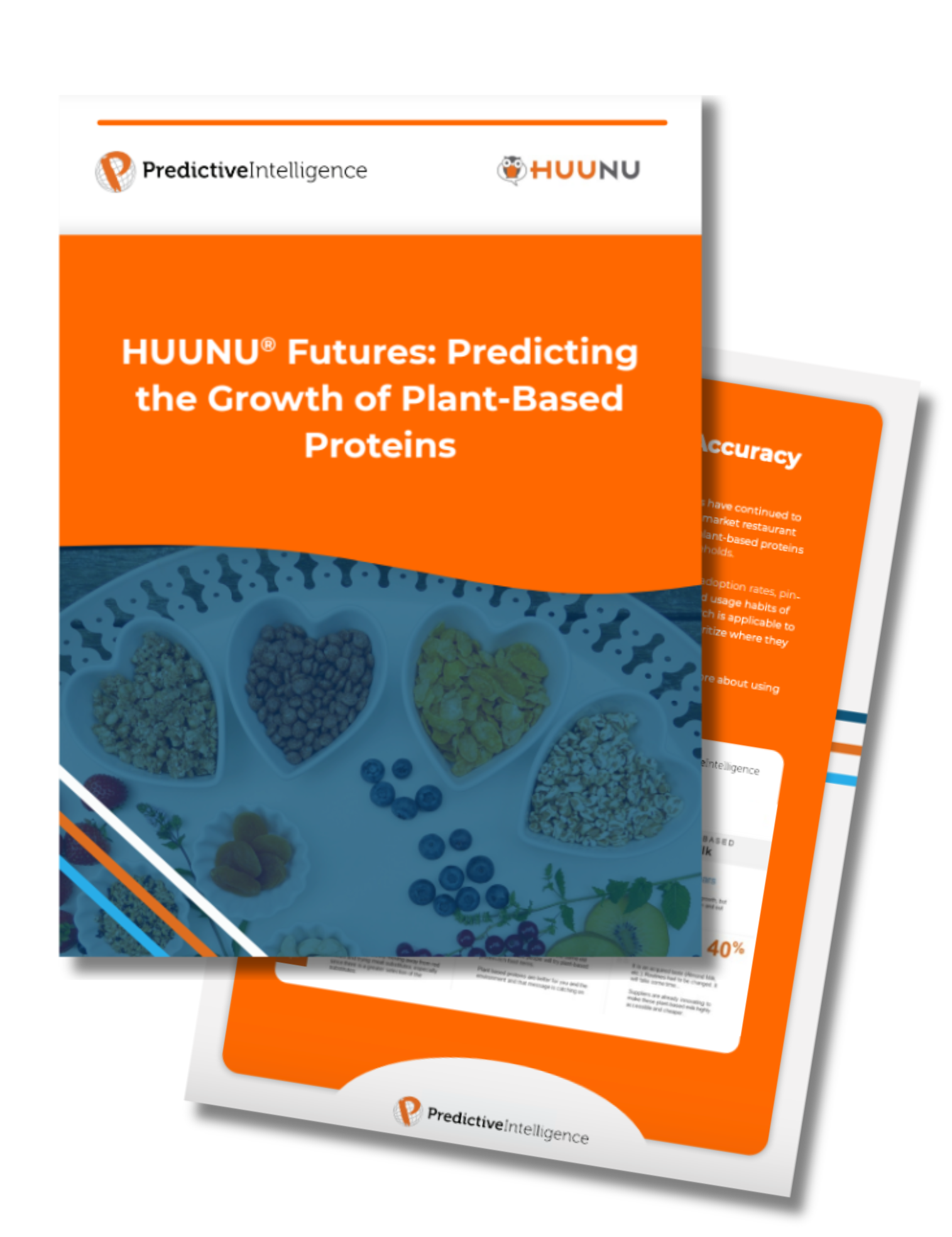3 real-world examples of TURF analysis in market research
TURF analysis can answer some critical strategic questions, including things like:
-
What happens if we add 1 or more products to our current line?
-
What happens if we replace a product in our current line with something else?
-
How many products should this line include?
-
How should we choose the best version(s) for line extension?
-
How should we choose the best option(s) for brand extensions?
-
What combination of benefits is accepted by the largest percentage of consumers?
Let’s take a look at how CRG has applied TURF analysis to real-world market research in various industries.
Food and beverage
In the food and beverage industry, determining the best combination of flavors, variants, and product types in a particular brand’s range is a make-or-break issue. CRG used TURF analysis to help a frozen food brand optimize its range of frozen meal products to appeal to the widest consumer base, helping to determine which meal options would drive the most demand while appealing to the broadest possible consumer base. In another example, we helped a cookie manufacturer identify the ideal mix of flavor varieties for their range.
Beauty
In the beauty industry, fast-moving trends and consumer preferences mean that companies need to be agile, flexible, and informed with regards to shifts in demand. TURF analysis is particularly good at revealing which combination of products will deliver the most reach at any given moment, as well as how the addition of new products will affect reach and sales performance. For example, research may reveal that consumers in the beauty industry are increasingly drawn to ingredients with holistic benefits, such as rice, turmeric, and honey. A TURF analysis would be able to determine whether developing and adding a product that aligns with this trend will increase reach, or dilute it, and therefore whether investing in R&D of a product designed to exploit this particular trend is likely to deliver sufficient ROI.
Pets
The pet industry is one of the fastest-growing sectors of the decade. In another example, CRG helped one pet brand determine the optimal mix of pet treat forms to maximize reach and demand.
When to use a TURF analysis
TURF analysis should always be used when embarking on the following:
Launching a new product line
TURF analysis should be applied early on in the strategy phase when launching a new product line to ensure that resources are directed at developing a winning product mix. TURF analysis can ensure new products added to your line are reaching new customers to expand your market share.
Optimizing product assortments
TURF analysis should be used when rationalizing and optimizing a product assortment to ensure that the final product line-up maximizes unique consumer reach and demand.
Bundling services or products
When bundling services or products, it’s critical to understand which bundle combinations will drive the highest demand among your target audience by testing various combinations with TURF analysis.
Optimizing marketing channels
TURF analysis can be used to determine which combination of marketing channels will maximize impact relative to various business objectives (awareness, sales, etc.).
During the R&D process
During the R&D process, you can use TURF analysis to identity which combination of features within a particular product will be most appealing to your target audience.
How to conduct a TURF analysis: a basic overview
Conducting a successful TURF analysis is a six-step process:
1. Define your objective
The first step is to define, clearly and succinctly, the objective of your analysis. What question are you trying to answer? Your objectives should be specific and aligned to your broader business objectives.
2. Collect data
The success of a TURF analysis depends heavily on the quality of the data to which the analysis is applied. Choose an experienced market research partner with a range of survey and predictive intelligence methodologies available to ensure that the data you collect is accurate and as free from bias as possible. CRG, for example, uses a predictive intelligence platform to enhance the TURF analysis process by predicting the impact of various combinations, three years out and beyond.
3. Identify variables
Identify the products, features, services, or variants under consideration. Each option becomes a variable for testing in the analysis.
4. Create combinations
Next, create the combinations you’d like to test for reach. Some products or concepts in a combination will be “fixed”. These are products or concepts that are already available in the market, or are pre-ordained launch products which are non-variable.
5. Run the analysis
Once you’ve determined the combinations for testing, it’s time to run the analysis, testing how much reach and frequency each combination delivers to determine the optimal option.
6. Make data-driven decisions
Next, you can leverage the results of your TURF analysis to identify the best combination relative to your business objectives for confident decisioning.
Leverage CRG to perform TURF analysis
For over a decade, CRG has been helping businesses gain the accurate insights they need to win in the marketplace. Using the advanced predictive intelligence platform, HUUNU, CRG can help predict the potential impact of different product or service combinations for both market reach and purchase frequency with proven 90% in-market accuracy.
Optimize your product, service or messaging mix with TURF analysis by CRG today.









